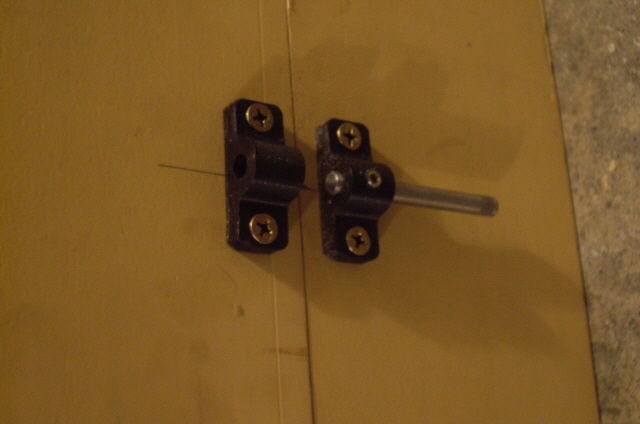|
I need some frames to hold the compressed sand that forms the mould. These are called a flask and comprise two parts called the drag and the cope, sometimes with intermediate frames called cheeks for complicated parting. The drag is the lower frame and I remember this term because in its normal position it can be dragged along the floor. The flask needs to be large enough to hold what ever it is you intend to cast with adequate side, top and bottom clearance to ensure that the molten metal stays where it is supposed to and doesn’t leak or set fire to stuff (say 50 mm).
Professional flasks are made of sturdy cast iron but, as I’m not yet in the casting business, I have settled on wood. The flasks need to be sturdy enough to resist deflection when the green sand is compacted (pressed, rammed and peened) around the pattern.
I made two simple rectangular frames about 300 mm long x 200 wide x 120 mm high out of 15 mm thick pine, glued and pin-nailed at the butt joints. In order to keep the frames square I glued and nailed wooden angles into the corners. The frames were planed and sanded flat and true at the meeting edges.

Figure 1. Flask Complete with Clamps and Guide Pins
With the flask made, I also cut two flat boards out of 25 mm thick plywood, both slightly larger than the flask. These are required during the moulding process to turn the cope and drag over.
When making up the mould the cope and drag need to be kept in register. This is usually achieved by mating pins and holes, or mating wedges. These register devices should not carry any weight but they need to mate smoothly with minimal slop. I don’t have any stock metal suitable for machining these so I 3D printed a set of register pin mounts for some 6.23 mm diameter precision steel shaft rescued from an old laser printer toner cartridge. The shaft holes were over-drilled for a clean running fit. If I burn these then the material cost is about $0.20 and it will take about 30 minutes to make a replacement. While the 3D printed register pins are quite adequate I figure that they will be another casting project to add to the list.

Figure 2. 3D Printed Guide Pin Detail
We have pretty much everything needed to make a casting. Let’s give it a go! Please click here to read about my first attempt at the casting process.
|